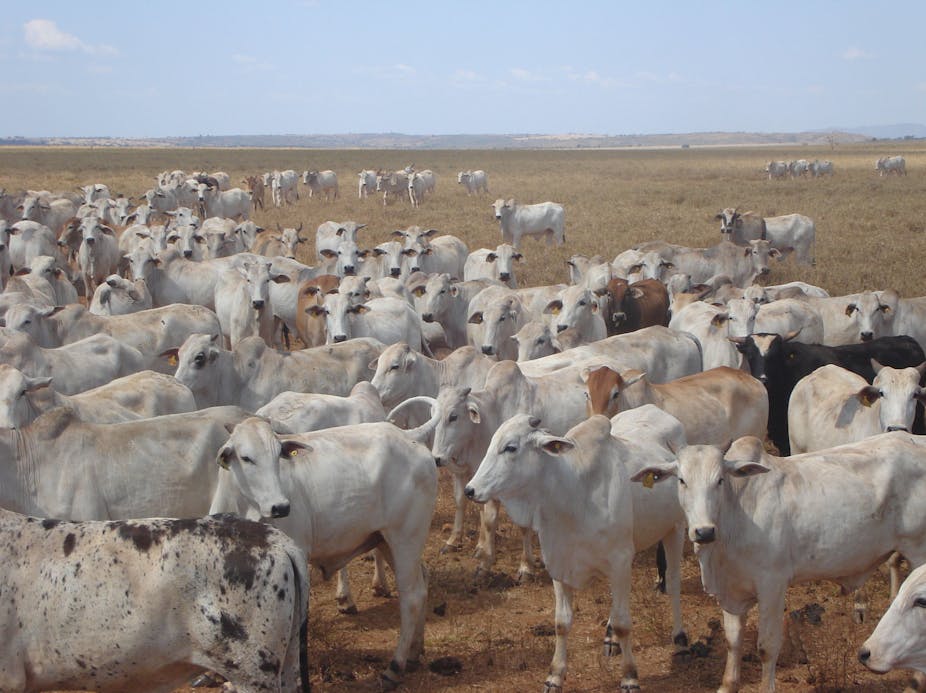While Brazil’s footballers have failed spectacularly to live up to expectations, there are other areas where the country is quietly exceeding them. Perhaps surprisingly, Brazil’s rapidly improving animal welfare standards put several more developed countries to shame.
When we think of Brazil and animals, we might picture huge cattle herds and the resulting deforestation of the Amazon. Yet Brazil is ahead of other livestock-producing countries such as Australia, at least as far as animal welfare legislation and regulation are concerned. This is a pretty damning indictment of Australia.
Brazil’s Federal Constitution of 1988 dedicates an entire chapter to the protection of the country’s fauna and flora, and establishes the legal standards for environmental protection. Ten years after the Constitution was written, the Environmental Crimes Law was enacted to criminalise environmental damage, and prevent cruelty to domestic animals and wildlife.
The Constitution says:
All have the right to an ecologically balanced environment. [sic] which is an asset of common use and essential to a healthy quality of life, and both the Government and the community shall have the duty to defend and preserve it for present and future generations… In order to ensure the effectiveness of this right, it is incumbent upon the Government to: … protect the fauna and the flora, with prohibition, in the manner prescribed by law, of all practices which represent a risk to their ecological function, cause the extinction of species or subject animals to cruelty.
Contrast that with the Australian Constitution, which does not mention flora and fauna or the environment (although perhaps it should).
Based on its constitution, Brazil’s Supreme Court has banned cruel practices such as cock fighting and the Oxen Festival, a tradition that involved crowds chasing an ox through the streets while beating him with sticks, knives, whips and stones.
Livestock welfare
Brazil has the second-largest cattle herd in the world (behind India), of 187 million animals. About 600,000 cattle are exported each year, mainly to Venezuela (92%) and Lebanon (5%). Like Australia, Brazil’s live export industry has imposed cruelty and suffering on animals, most infamously in 2012 on board the Gracia Del Mar, where more than 2,700 cattle died in the heat after the vessel had been refused permission to unload in several ports in the Middle East.
A European Commission report ranked Australia and Brazil in the same category for livestock welfare: both slightly below European Union standards. But unlike Australia, all major livestock animals in Brazil are covered by national legislation, whereas Australia has voluntary national codes of practice, and only legislates for livestock welfare at state and territory level.
Brazil’s agriculture ministry works closely with the World Society for the Prevention of Cruelty to Animals (WSPCA), to provide animal welfare training for veterinarians and to improve slaughter methods. A WSPCA case study shows how animal welfare is increasing Brazil’s beef cattle productivity without the need to increase the land area used.
The government also provides R1.7 billion (A$815 million) in loans to improve welfare, for example by phasing out the use of intensive confinement systems in factory farming.
In the lab
Brazil is rapidly making ground in terms of animal welfare in the lab. Since 2009, all aspects of animal experimentation have been regulated by federal law, and all educational centres or labs that use animals now have to have an ethics committee. In contrast, Australia has a Code for the Care and Use of Animals for Scientific Purposes which also requires ethics committees, but much of what is recommended in the code is voluntary.
In 2011, the Brazilian government set up the Brazilian Center for the Validation of Alternative Methods, which looks for alternative, non-animal research methods. In doing this it has joined the ranks of the United States, Europe, Canada, Japan and South Korea, all of which have similar government-sponsored centres. Australia doesn’t.
Earlier this year, the state of São Paulo banned animal testing for cosmetics. More recently, Brazil’s Congress voted to end animal testing for most cosmetics, in favour of internationally approved non-animal methods.
In Australia such prohibitions do not exist, although it is claimed the practice has been largely discontinued. But only the Greens have drafted legislation to formally ban animal cosmetics testing. That bill is waiting to be presented to Parliament.
Good intentions
One could argue that legislation and regulation are only useful if they are enforced. Does animal welfare legislation in Brazil lead to greater welfare than the mostly voluntary codes in Australia? We don’t know for sure.
Of course, Brazil is likely to face many challenges in translating good legal intentions into practice. The existence of a range of animal protection and welfare organisations indicates that animal welfare in Brazil has some way to go.
However, setting legal standards is always better than leaving animal welfare to industry self-regulation. Other countries, which prefer to let the market handle things, would do well to take note.

